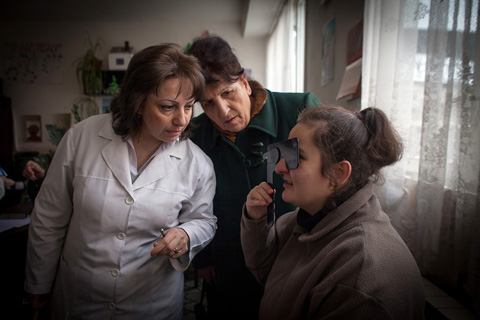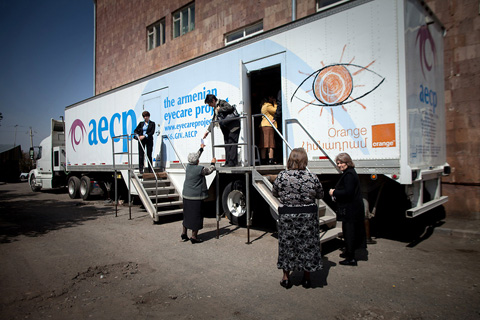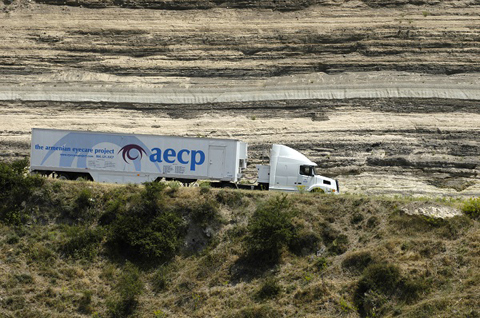The Armenian EyeCare Project a Success Story
\n
The Armenian EyeCare Project a Success Story –
\n
By Katya Cengel
\n
\n
\n
It was the Nagorno-Karabakh conflict that drew Roger Ohanesian to Armenia for the first time back in 1992. He came from California not to fight against Azerbaijan, but to help Armenians amid a public health crisis.
\n
An ophthalmologist, Ohanesian, a member of the Armenian Diaspora in the United States, answered a call from the Armenian government to treat people with eye-related problems. By 1992, the Karabakh war had already been in progress for four years and had two more years to run before a ceasefire agreement would be signed. The fighting had already drained Armenia of its resources, and Ohanesian’s presence was needed to fill a healthcare gap.
\n
\n
\n
\n
“I went to Armenia having no idea really what it was and never having been there before,” said Ohanesian, who is in his mid-70s. “I don’t even speak the language.”
\n
He established the non-profit Armenian EyeCare Project. In the 22 years since that first trip, he has returned to Armenia more than 40 times.
\n
In the beginning, the Armenian EyeCare Project served those wounded in the war. But after the 1994 ceasefire, Ohanesian expanded his activity to the general population, and also engaged in capacity building. Through the Armenian EyeCare Project, he brought Armenian ophthalmologists to the United States for training and encouraged American specialists to travel to Armenia to lecture.
\n
Last winter, an EyeCare Project day clinic held in the outskirts of Yerevan drew almost 200 people. Among those treated by ophthalmologist Anna Simonyan was an old man nearly blind from cataracts, a boy who needed glasses and a young woman with a brain tumor that was affecting her vision. “Even simple eyeglasses that can help them to see a bit more will help them immensely,” said Simonyan.
\n
\n
\n
\n
Those who cannot make it to the capital are treated at a mobile eye hospital. Since it began traversing the country in 2002, the surgical unit on wheels has treated tens of thousands of patients, according to Ohanesian.
\n
In recent years, the project has focused on babies. Better neonatal care in Armenia has meant more premature babies are surviving – but the lack of eye screenings left some in danger of going blind.
\n
\n
\n
\n
In the United States, the risks of retinopathy of prematurity, an eye condition that can lead to blindness if left untreated, have been known for decades. In Armenia, it was relatively unheard of before 2010, when Ohanesian invited Dr. Thomas Lee, director of the Vision Center at Children’s Hospital Los Angeles, to lecture on the topic. Premature babies in Armenia were often subjected to high levels of oxygen saturation at birth, increasing the risk of damage to the retina and the possible need for surgery. Doctors now know to more closely monitor those levels, thanks to a training program that Lee helped develop.
\n
“Before a lot of neonatologists did not think about it at all,” said Yerevan neonatologist Hrant Kalengeryan. “After the program, they began to.”
\n
\n
\n
AECP Mobile Eye Hospital travels throughout Armenia visiting each region in Armenia every two years.
\n





